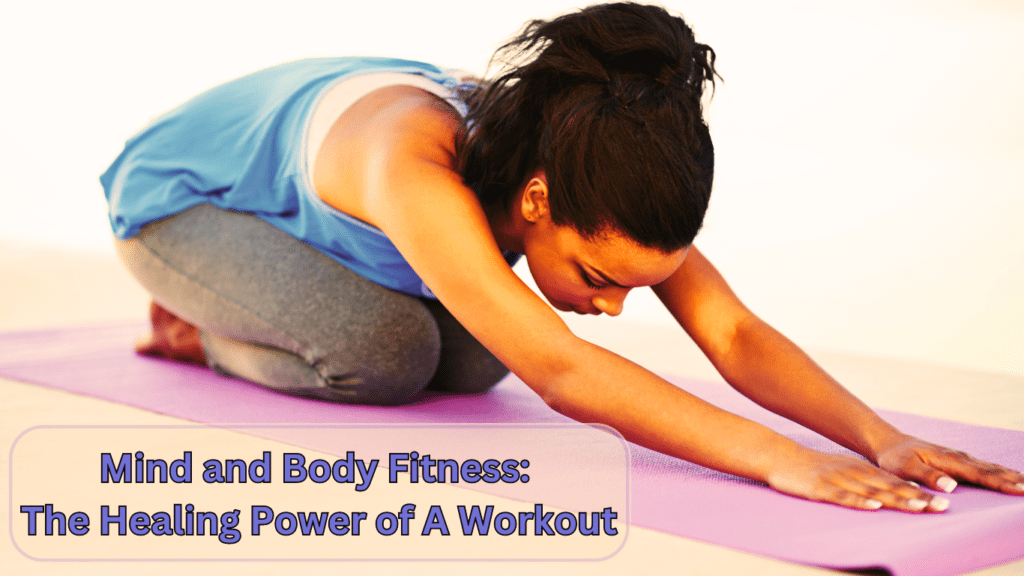Enhancing Knee Health: The Benefits of Isometric Exercises for Knees
In this article, we will discuss isometric exercises for knees specifically aimed at alleviating chronic pain and improving overall knee health.
Did you know that one in four adults experiences chronic knee pain at some point in their lives? As a personal trainer, I’ve seen how crucial it is to maintain strong and healthy knees. The knees are essential for nearly every movement we make, from walking and running to sitting and standing. Without healthy knees, even simple activities can become a challenge, impacting overall quality of life.
When I train clients, I emphasize the importance of strengthening the muscles around the knees to provide better support and reduce the risk of injury. This is where isometric exercises for knees come into play. These exercises are a fantastic way to build strength without putting unnecessary strain on the joints. Isometric exercises involve contracting the muscles without moving the joint. Unlike traditional exercises that involve movement, isometric exercises require you to hold a position for a set period.
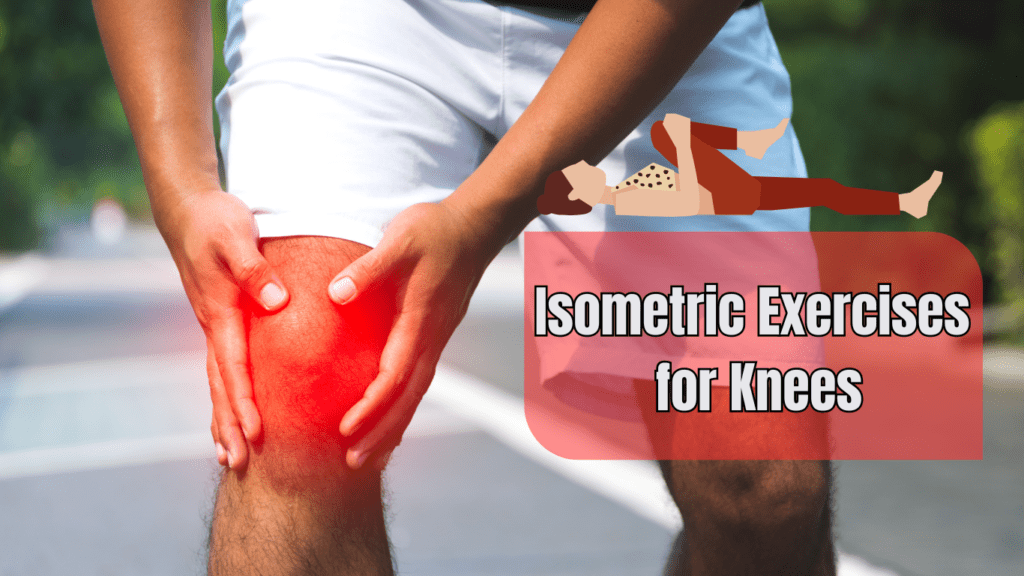
The beauty of isometric exercises for knees lies in their simplicity and effectiveness. They are especially beneficial for those recovering from an injury or dealing with chronic pain. By holding a static position, you can strengthen the muscles around your knee without the risk of further injury. For example, one of my favorite isometric exercises is the wall sit. This exercise targets the quadriceps, hamstrings, and glutes, all crucial muscles for knee stability.
Incorporating isometric exercises for knees into your routine can make a significant difference in knee health. These exercises are not only great for rehabilitation but also for prevention. They help increase muscle endurance, improve joint stability, and enhance overall strength. Whether you’re an athlete looking to improve performance or someone who wants to stay active without pain, isometric exercises can be a game-changer.
Comparative Analysis: Isometric vs. Dynamic Exercises for Knee Health
| Aspect | Isometric Exercises | Dynamic Exercises | Comparison |
|---|---|---|---|
| Muscle Activation | Focuses on static muscle contraction without movement. | Involves joint movement through a range of motion. | Isometric exercises emphasize static contraction, while dynamic exercises involve moving joints through various motions. |
| Joint Stress | Minimal stress on knee joints due to static nature. | Can exert significant stress, especially with weights. | Isometric exercises are safer for joints, reducing risk of injury compared to dynamic exercises which may stress joints more. |
| Suitability for Injuries | Ideal for individuals recovering from knee injuries. | May pose risks if performed incorrectly post-injury. | Isometric exercises are gentler on injured knees, aiding in rehabilitation compared to potentially risky dynamic movements. |
| Muscle Strength and Endurance | Enhances muscle endurance by prolonged contraction. | Builds strength through dynamic movement patterns. | Isometric exercises improve endurance through sustained effort, contrasting with dynamic exercises that focus on strength through movement. |
| Joint Stability | Improves stability by strengthening supportive muscles. | Enhances stability by engaging muscles dynamically. | Isometric exercises stabilize joints by strengthening muscles without movement, while dynamic exercises stabilize through varied joint motions. |
| Risk of Overuse Injuries | Low risk due to controlled muscle contraction. | Higher risk with repetitive motions or heavy weights. | Isometric exercises reduce overuse injury risk by avoiding repetitive movements, contrasting with dynamic exercises that may strain joints with repetition. |
| Preventive Benefits | Effective in preventing knee injuries with proper form. | Prevents injuries by conditioning muscles dynamically. | Isometric exercises prevent injuries by conditioning muscles statically, compared to dynamic exercises which prevent through varied conditioning. |
| Rehabilitation Benefits | Supports rehabilitation with low-impact exercises. | Essential for functional recovery with gradual progression. | Isometric exercises support rehabilitation through low-impact and gradual exercise, differing from dynamic exercises that aid recovery by progressive and functional exercise. |
| Ease of Incorporation | Can be integrated into daily routines easily. | Requires space and equipment for varied exercises. | Isometric exercises integrate daily routines by ease |
As a trainer, I’ve guided many clients through these exercises with great success. One client, in particular, had been struggling with knee pain for years. After incorporating a regular routine of isometric exercises for knees, he noticed a remarkable improvement in his pain levels and overall knee function. This is just one example of how effective these exercises can be.
When you think about knee health, it’s important to remember that the knees are supported by several key muscle groups. The quadriceps, hamstrings, glutes, and calves all play a role in knee stability. By focusing on these areas, you can provide your knees with the support they need to function properly. Isometric exercises, such as wall sits, straight leg raises, and static lunges, target these muscles effectively.
Wall sits, for example, involve sitting against a wall with your knees bent at a 90-degree angle and holding the position. This exercise not only strengthens the quadriceps but also engages the core and improves balance. Straight leg raises are another excellent exercise that targets the quadriceps without putting pressure on the knee joint. By lifting the leg and holding it in a straight position, you can build muscle strength and support the knee.
Static lunges are also beneficial for knee health. By holding a lunge position, you engage the quadriceps, hamstrings, and glutes, providing comprehensive support for the knee. These exercises can be modified to suit different fitness levels and can be performed almost anywhere, making them highly accessible.
Subscribe And Get Our Free E-Book:Unlocking The Power Of Nutrition-Supplements, Substitutes, and Superfoods!
In my experience, consistency is key when it comes to improving knee health. By regularly incorporating isometric exercises for knees into your fitness routine, you can see significant improvements in strength and stability. It’s also important to listen to your body and avoid pushing through pain. Isometric exercises should feel challenging but not painful. If you experience discomfort, it’s best to consult with a healthcare professional or a trained personal trainer who can guide you through the exercises safely.
As a personal trainer, I’ve seen firsthand how effective isometric exercises can be for knee health. They offer a low-impact, high-benefit solution for strengthening the muscles that support the knee. Whether you’re recovering from an injury or looking to prevent one, these exercises are a valuable addition to any fitness routine. Remember, strong knees are essential for maintaining an active and healthy lifestyle. By taking care of your knees with isometric exercises for knees, you can enjoy the activities you love without pain or limitation.
Understanding Isometric Exercises
As a personal trainer, understanding the fundamentals of isometric exercises for knees is essential for maximizing their benefits. Let’s delve into what exactly these exercises entail and why they’re so effective for improving knee strength and stability.
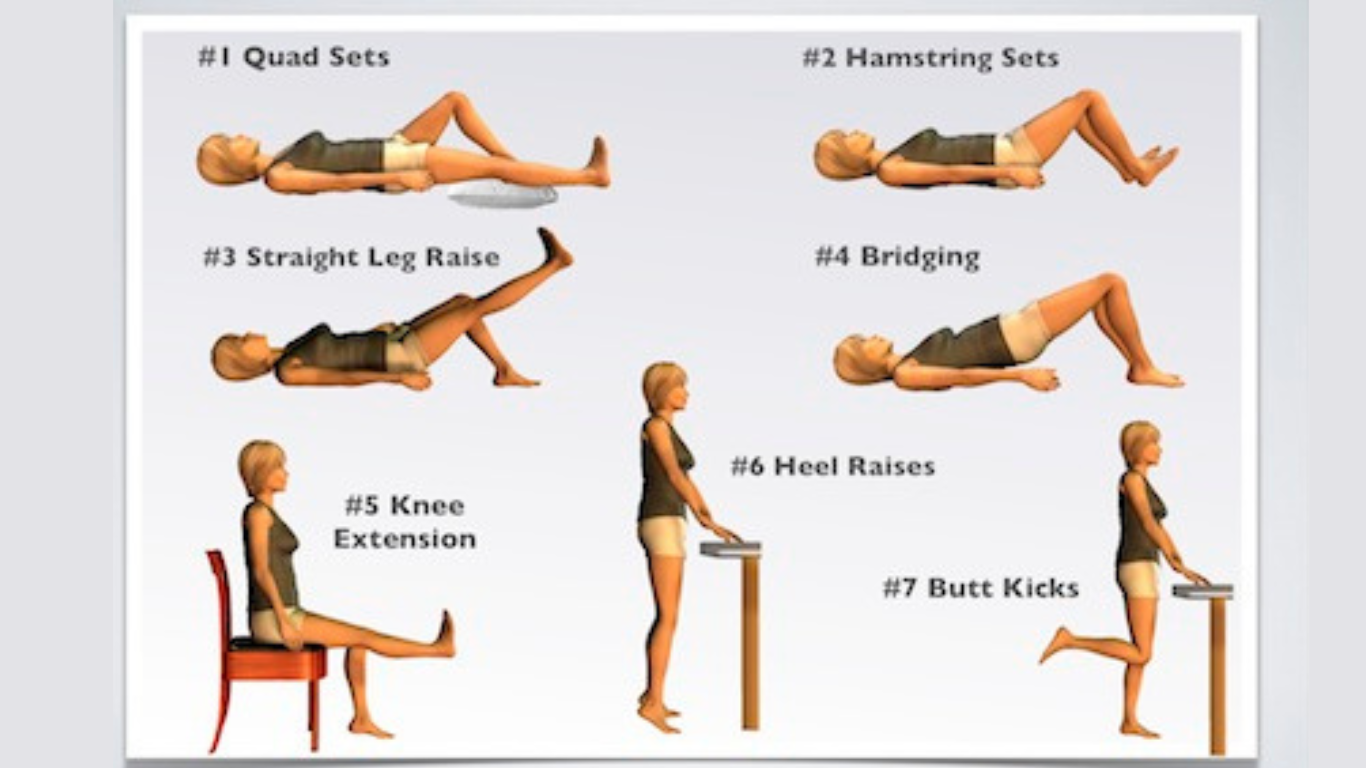
Isometric exercises involve contracting a specific muscle or group of muscles without changing the length of the muscle or joint angle. Unlike dynamic exercises that involve movement, isometric exercises are static. This means you hold a position for a set period, exerting force against an immovable object or resisting an external force. For example, holding a plank position or pressing your hands together with maximal force are common isometric exercises.
The beauty of isometric exercises for knees lies in their simplicity and safety. Since there’s no joint movement, they put minimal stress on the knees, making them ideal for individuals with knee issues or those recovering from injuries. Isometric exercises also allow you to target specific muscle groups effectively, which is crucial for building strength and stability around the knee joint.
Now, let’s explore the specific benefits of isometric exercises for knee strength and stability. Firstly, they help improve muscle endurance. By holding a static position for an extended period, you challenge your muscles to maintain contraction, which enhances their endurance over time. This is particularly beneficial for activities that require prolonged knee stability, such as hiking or cycling.
Secondly, isometric exercises promote joint stability. By strengthening the muscles around the knee joint, you provide better support and protection against injury. This is especially important for athletes or individuals who engage in high-impact activities that put stress on the knees, like running or jumping.
Additionally, isometric exercises can help alleviate knee pain and discomfort. By targeting specific muscle imbalances or weaknesses, you can improve overall knee function and reduce the risk of overuse injuries. Many of my clients have experienced significant relief from knee pain after incorporating isometric exercises into their routine.
Now, let’s briefly compare isometric exercises with dynamic exercises and highlight their unique advantages for knee health. Dynamic exercises, such as squats or lunges, involve joint movement through a range of motion. While these exercises are effective for building overall strength and power, they can also put significant stress on the knees, especially if performed incorrectly or with heavy weights.
On the other hand, isometric exercises provide a safer alternative for strengthening the muscles around the knees without excessive joint stress. They allow you to target specific muscle groups without compromising joint integrity, making them ideal for individuals with knee issues or those looking to prevent injuries.
In conclusion, isometric exercises for knees offer a simple yet effective way to improve knee strength, stability, and function. By incorporating these exercises into your routine, you can enhance muscle endurance, promote joint stability, and reduce the risk of knee pain and injury. So why not give them a try and experience the benefits for yourself?
Anatomy of the Knee and Common Issues
Understanding the anatomy of the knee is crucial for comprehending how isometric exercises for knees can benefit this complex joint. Let’s explore the basic knee anatomy, common knee problems, and the role of isometric exercises in prevention and rehabilitation.
The knee joint is composed of several key components, including ligaments, tendons, and muscles. Ligaments are tough bands of tissue that connect bone to bone and provide stability to the joint. Tendons, on the other hand, connect muscle to bone and facilitate movement. Muscles surrounding the knee, such as the quadriceps, hamstrings, and calf muscles, play a significant role in supporting and stabilizing the joint during movement.
Now, let’s discuss some common knee problems that individuals may encounter. Arthritis is a prevalent condition that causes inflammation and deterioration of the knee joint, leading to pain and stiffness. Ligament injuries, such as a torn ACL or MCL, are also common and can result from sports-related activities or trauma. Patellar pain, or patellofemoral pain syndrome, is another issue characterized by pain around the kneecap, often aggravated by activities like running or climbing stairs.
As a personal trainer, I’ve witnessed firsthand how these knee problems can impact individuals’ daily lives and hinder their ability to participate in physical activity. This is where isometric exercises for knees can play a vital role in both prevention and rehabilitation.
Isometric exercises are particularly beneficial for preventing knee issues by strengthening the muscles around the joint and improving overall stability. By targeting specific muscle groups, such as the quadriceps and hamstrings, isometric exercises help maintain proper alignment and reduce the risk of injury during physical activity. Additionally, incorporating these exercises into a regular fitness routine can enhance joint integrity and reduce the likelihood of developing arthritis or other degenerative conditions.
In terms of rehabilitation, isometric exercises can be a valuable tool for individuals recovering from knee injuries or surgeries. Because they involve minimal joint movement, isometric exercises allow individuals to safely strengthen their muscles without exacerbating pain or causing further damage. This is especially important during the early stages of rehabilitation when traditional dynamic exercises may be too strenuous or risky.
For example, individuals recovering from a torn ACL may benefit from isometric exercises like quad sets and hamstring sets to regain strength and stability in the knee joint. These exercises help activate the muscles surrounding the knee without placing excessive stress on the healing ligament.
Similarly, individuals with patellar pain syndrome can use isometric exercises like wall sits or static quad contractions to alleviate pain and improve muscle function around the kneecap. By gradually increasing the intensity and duration of these exercises, individuals can progress their rehabilitation and return to their normal activities with reduced pain and improved function.
Isometric exercises for knees are a valuable tool for both preventing and rehabilitating common knee problems. By targeting specific muscle groups and improving overall joint stability, these exercises can help individuals maintain knee health and function throughout their lives. Whether you’re looking to prevent knee injuries or recover from a knee issue, incorporating isometric exercises into your fitness routine can make a significant difference in your overall knee health and well-being.
Practical Isometric Exercises for Knees
Let’s dive into the practical side of isometric exercises for knees and explore how you can incorporate them into your fitness routine for maximum benefit.
As a personal trainer, I’m always keen on starting with a solid warm-up routine to prepare the body for exercise. When it comes to the knees, it’s essential to ensure they’re adequately primed before diving into more intense activities. A quick and easy warm-up I often recommend involves gentle movements like leg swings, knee circles, and short bouts of walking or cycling to increase blood flow to the muscles and joints.
Now, let’s move on to the main event: isometric exercises specifically designed to target the knees and surrounding muscle groups.

First up, we have the classic Wall Sit. This exercise is excellent for targeting the quadriceps, hamstrings, and glutes—all essential for knee stability. To perform a wall sit, simply find a clear wall space, lower yourself into a seated position with your back against the wall and your knees at a 90-degree angle, and hold for a set duration. You can vary the intensity by adjusting the depth of your squat or holding weights for added resistance.
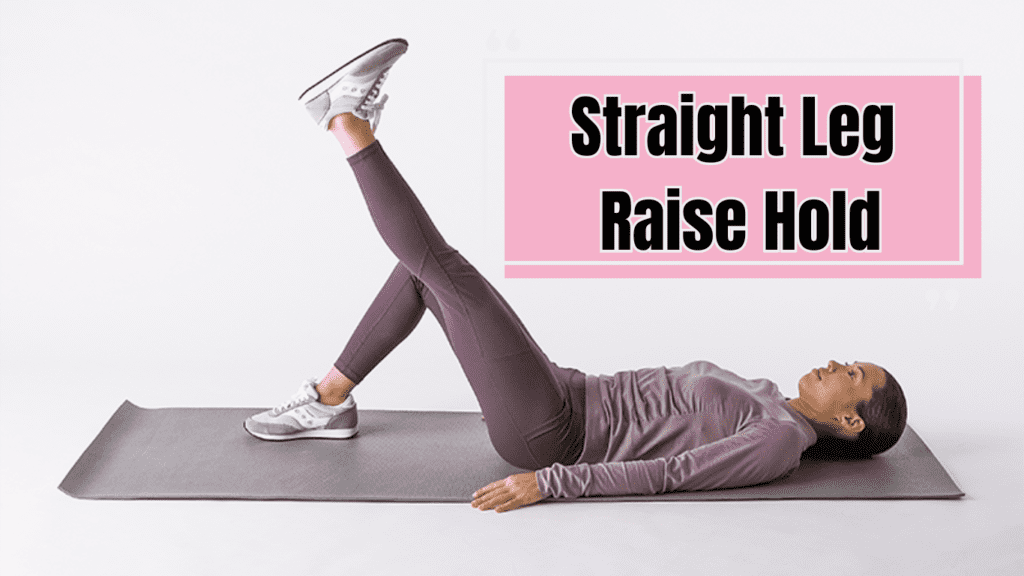
Next, we have the Straight Leg Raise Hold. This exercise is fantastic for targeting the quadriceps while also engaging the core muscles for stability. Start by lying flat on your back with one leg bent and the other straight. Lift the straight leg off the ground, keeping it as straight as possible, and hold it in the air for a few seconds before lowering it back down. Repeat on the other leg for a balanced workout.
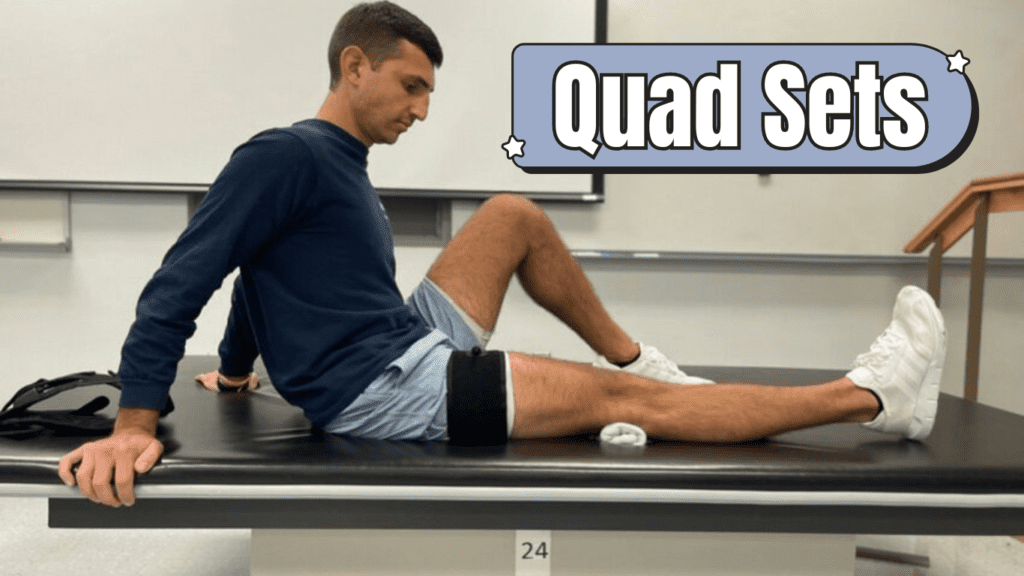
Moving on to Quad Sets, which are perfect for isolating and strengthening the quadriceps muscle. To perform quad sets, sit or lie down with your legs straight and your feet flat on the ground. Tighten the muscles at the front of your thigh by pushing the back of your knee down into the ground, then hold for a few seconds before releasing. You can increase the challenge by placing a rolled-up towel under your knee for added resistance.
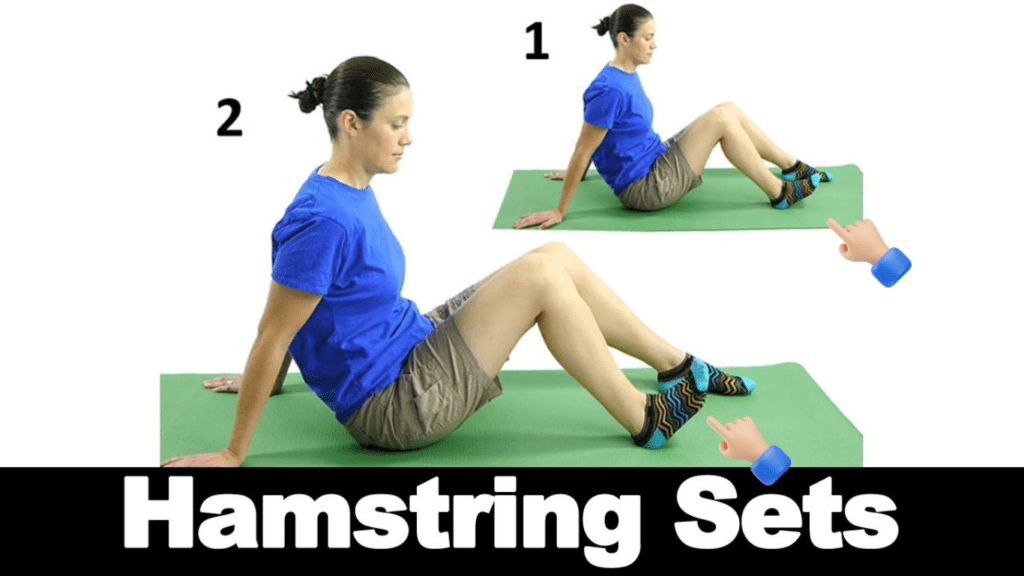
Now, let’s not forget about the Hamstring Sets. These exercises target the hamstrings, which are crucial for maintaining knee stability and preventing injury. To perform hamstring sets, lie flat on your stomach with your legs straight. Bend one knee and lift your heel towards your buttocks, engaging the hamstring muscles, then hold for a few seconds before lowering back down. Repeat on the other leg to ensure balanced strength development.

Finally, we have the Adductor and Abductor Holds. These exercises focus on the inner and outer thigh muscles, respectively, which play a significant role in supporting the knees from different angles. To perform adductor holds, lie on your side with your bottom leg bent for stability and your top leg straight. Lift the top leg as high as you can, then hold for a few seconds before lowering back down. Repeat on the other side for balanced muscle development. For abductor holds, simply reverse the position, lying on your opposite side and lifting the bottom leg instead.
To aid in your understanding, I’ve included visual aids such as diagrams or photos to illustrate each exercise. These can be invaluable tools for ensuring proper form and technique.
Targeted Exercises, Benefits, and Variations Chart
| Isometric Exercise | Targeted Muscles | Benefits | Variations |
|---|---|---|---|
| 1. Wall Sit | Quadriceps, hamstrings, glutes | Strengthens knee stabilizers without joint movement. | Adjust hold duration or add weights for intensity. |
| 2. Straight Leg Raise Hold | Quadriceps, core | Enhances quadriceps strength and core stability. | Increase hold time or perform with ankle weights. |
| 3. Quad Sets | Quadriceps | Isolates and strengthens quadriceps effectively. | Use a rolled-up towel under knee for added resistance. |
| 4. Hamstring Sets | Hamstrings | Improves hamstring strength crucial for knee stability. | Gradually increase hold time or perform with resistance bands. |
| 5. Adductor/Abductor Holds | Adductors (inner thighs), Abductors (outer thighs) | Supports knee from different angles, enhancing stability. | Vary leg positioning and hold duration to target specific muscle groups. |
Key Insights:
- Targeted Muscles: Each exercise focuses on specific muscle groups essential for knee stability and strength.
- Benefits: Isometric exercises provide targeted strengthening without joint movement, promoting muscle endurance and stability.
- Variations: Adjusting duration, adding weights, or modifying body positioning enhances exercise intensity and effectiveness.
Application: Incorporating these isometric exercises into your routine enhances knee health by strengthening supportive muscles and improving overall joint stability. Begin with proper form and gradually increase intensity to achieve optimal results.
Knee Isometric/Knee Setting Exercises Video
As you progress with your isometric exercises for knees, remember to listen to your body and adjust the intensity as needed. Gradually increase the duration or resistance to continue challenging your muscles and seeing improvements in strength and stability over time. With dedication and consistency, you’ll be well on your way to stronger, healthier knees in no time.
Integrating Isometric Exercises for Knees into Daily Routine
Now that we’ve covered the fundamentals of isometric exercises for knees, let’s explore how you can seamlessly integrate them into your daily routine for maximum effectiveness.
As a personal trainer, I understand that time management is crucial when it comes to maintaining a consistent fitness regimen. Fortunately, incorporating isometric exercises into your daily routine doesn’t have to be complicated or time-consuming. With a bit of planning and creativity, you can easily squeeze these exercises into even the busiest of schedules.
One tip for time management is to identify pockets of time throughout your day where you can perform quick sets of isometric exercises. For example, you could do a few sets of wall sits while waiting for your coffee to brew in the morning or perform quad sets during commercial breaks while watching TV in the evening. By taking advantage of these small windows of time, you can accumulate a significant amount of exercise throughout the day without disrupting your schedule.
Another strategy is to combine isometric knee exercises with other forms of exercise. For instance, you could incorporate wall sits or straight leg raise holds into your regular strength training routine or add them as a warm-up before cardiovascular activities like running or cycling. By combining isometric exercises with other workouts, you can maximize efficiency and ensure that you’re targeting all aspects of your fitness.
Consistency is key when it comes to seeing results from isometric exercises for knees. It’s essential to make these exercises a regular part of your routine and stick with them over the long term. To help maintain consistency, consider setting specific goals for yourself and tracking your progress over time. This could involve keeping a workout journal to record the number of sets and reps you complete or using a fitness app to track your workouts electronically.
Monitoring your progress is also crucial for gauging the effectiveness of your isometric exercises and making adjustments as needed. Pay attention to how your knees feel during and after workouts, and be mindful of any improvements in strength and stability over time. Celebrate your successes along the way, whether it’s holding a wall sit for a few seconds longer or noticing a decrease in knee pain during daily activities.
By integrating isometric exercises for knees into your daily routine and prioritizing consistency and progress monitoring, you can reap the full benefits of these effective strength-building exercises. With dedication and perseverance, you’ll soon find yourself enjoying stronger, more stable knees and better overall health and well-being. Remember, it’s the small, consistent efforts that lead to lasting change, so keep up the good work and stay committed to your fitness goals.
Tips and Common Mistakes
Alright, let’s dive into some helpful tips for maximizing the effectiveness of isometric exercises for knees and avoiding common mistakes along the way.
As a personal trainer, I’ve learned a few tricks of the trade when it comes to getting the most out of these exercises. One important tip is to focus on maintaining proper form and technique throughout each exercise. This means paying attention to your body alignment, engaging the correct muscles, and avoiding any unnecessary strain on the joints.
When performing isometric exercises like wall sits or straight leg raise holds, it’s crucial to keep your back straight, your core engaged, and your knees aligned with your ankles. Avoid rounding your back or allowing your knees to collapse inward, as this can put undue stress on the joints and increase the risk of injury.
Another tip is to listen to your body and adjust the intensity of the exercises as needed. While it’s important to challenge yourself, it’s equally important to know your limits and avoid pushing through pain. If you experience any discomfort or sharp pain during an exercise, stop immediately and reassess your form. It’s better to perform the exercises with proper technique at a lower intensity than to risk injury by pushing too hard.
Consistency is key when it comes to seeing results from isometric exercises for knees. Aim to incorporate these exercises into your routine on a regular basis, whether it’s a few times a week or every day. By making them a consistent part of your fitness regimen, you’ll gradually build strength and stability in the muscles surrounding the knee joint, reducing the risk of injury and improving overall knee health.
One common mistake to avoid is neglecting to warm up properly before starting your isometric workout. A thorough warm-up helps increase blood flow to the muscles, improves flexibility, and reduces the risk of injury during exercise. Spend a few minutes performing dynamic stretches or light cardio to prepare your body for the demands of the workout ahead.
It’s also essential to progress gradually with your isometric exercises to avoid overloading the muscles and joints. Start with lighter resistance or shorter hold times and gradually increase the intensity or duration as your strength improves. This gradual progression helps prevent muscle fatigue and allows your body to adapt safely to the demands of the exercises.
Another common mistake is neglecting to incorporate variety into your routine. While isometric exercises for knees are highly effective, it’s essential to mix things up occasionally to keep your workouts interesting and challenge your muscles in different ways. Try experimenting with different exercises, variations, or equipment to keep your routine fresh and exciting.
Finally, don’t forget the importance of rest and recovery. Giving your muscles time to rest and repair between workouts is crucial for preventing overuse injuries and ensuring long-term progress. Listen to your body and give yourself permission to take rest days when needed, and prioritize activities like stretching, foam rolling, and adequate sleep to support recovery.
By following these tips and avoiding common mistakes, you can make the most of your isometric exercises for knees and enjoy the benefits of stronger, more stable knees for years to come. Remember to stay patient, stay consistent, and always prioritize safety and proper form in your workouts. With dedication and perseverance, you’ll be well on your way to achieving your fitness goals and maintaining optimal knee health.
Concluding the Journey: Embracing Isometric Exercises for Stronger Knees
As we come to the final part of our journey into the world of isometric exercises for knees, let’s take a moment to reflect on the key points we’ve covered and how they can benefit your knee health and overall fitness.
Throughout this article, we’ve explored the importance of maintaining strong and healthy knees, as well as the role that isometric exercises can play in achieving this goal. We’ve learned that the knees are essential for nearly every movement we make, and without proper strength and stability, even simple activities can become challenging and painful.
We’ve defined isometric exercises as static exercises that involve contracting the muscles without changing the length of the muscle or joint angle. These exercises are particularly beneficial for knee health because they target specific muscle groups effectively without putting undue stress on the joints.
We’ve discussed the specific benefits of isometric exercises for knees, including improved muscle endurance, joint stability, and pain relief. These exercises are not only effective for preventing knee injuries but also for rehabilitating common knee problems such as arthritis, ligament injuries, and patellar pain.
We’ve compared isometric exercises with dynamic exercises, highlighting their unique advantages for knee health. While dynamic exercises involve joint movement through a range of motion, isometric exercises provide a safer alternative for strengthening the muscles around the knees without excessive joint stress.
We’ve explored practical ways to integrate isometric exercises into your daily routine, including time management tips, combining them with other workouts, and emphasizing consistency and progress monitoring. By making these exercises a regular part of your fitness regimen, you can enjoy stronger, more stable knees and better overall health and well-being.
We’ve provided helpful tips for maximizing the effectiveness of isometric exercises for knees and avoiding common mistakes along the way. From maintaining proper form and technique to progressing gradually and prioritizing rest and recovery, these tips will help you get the most out of your workouts while minimizing the risk of injury.
And finally, we’ve reached the culmination of our journey, where we encourage you to take action and start incorporating isometric exercises into your routine for better knee health. Whether you’re a seasoned athlete or just starting on your fitness journey, these exercises offer a simple yet effective way to improve strength, stability, and function in the knees.
So, I invite you to join me in this journey towards healthier, happier knees. Start by incorporating a few sets of isometric exercises for knees into your daily routine, and gradually increase the intensity and duration as you progress. Remember to listen to your body, stay consistent, and celebrate your progress along the way.
I also encourage you to share your experiences or ask questions in the comments section below. Your feedback and insights are invaluable, and together, we can continue to learn and grow on our journey to optimal knee health.
Thank you for joining me on this adventure, and here’s to stronger, more resilient knees for life!

